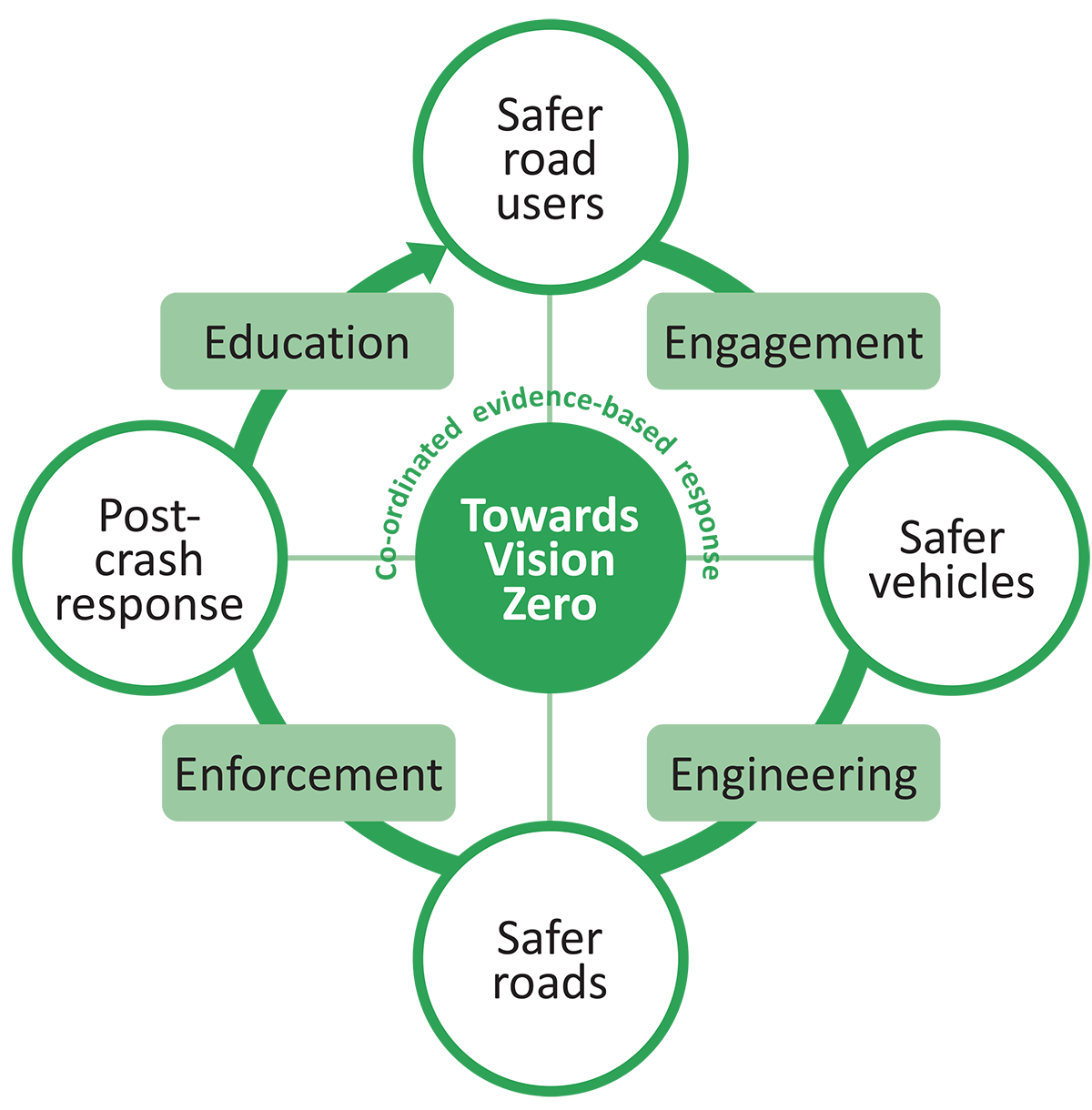The Four E’s
Our Action Plan is formed around the four E’s priority areas of action, each of which delivers across our four strategic outcomes of Safer Road Users, Safer Vehicles, Safer Roads and Post-Crash Response.
Education
- Deliver our road safety education interventions across different target groups to build knowledge and understanding of how to use roads safely and the impacts of dangerous and irresponsible driving, particularly the fatal five, and improve awareness of safe travel behaviours, particularly around speed limits (including 20mph limits), interaction with vulnerable road users (including emerging modes such as escooters and ebikes, use of seatbelts and safe use of phones.
- Deliver training programmes to educate drivers from all ages to choose the appropriate speed for the roads and conditions.
- Provide evidence-based best practice interventions for young, male drivers in rural areas to reduce collisions on high-risk roads.
- Deliver education programmes for children across the City and County so that they achieve a minimum basic level of road safety awareness before and while they begin travelling independently.
- Explore opportunities for working with elderly and disability groups to promote safe travel and mobility using a range of transport types.
- Educate about the importance of vehicle maintenance and safety, particularly tyre and brake conditions.
- Use the output from collision investigation and learning along with knowledge of the devastating impact collisions have on victims and their family, to inform partnership communication and safety awareness campaigns to improve systematic information sharing and post collision learning.
- Promote campaigns to prevent collisions on our roads such as BikeSafe, ROADWISE and to highlight the dangers of close passing of cyclists.
- Publicise results of vehicles exceeding speed limits recorded by the Safety Camera Van and the criminal justice outcomes of fatal and lifechanging or life-threatening collisions that proceed to prosecution through partners’ media channels.
- Work with wider partners to promote bicycle safety across all areas and deliver motorcycle safety including Biker Down and Bike Safe training initiatives.
- Ensure our partner agencies have the necessary competencies and knowledge to deliver road safety interventions in a professional manner and to a high standard.
- Work with commercial fleet operators, and the business community to promote good practice in work related road safety, including support for Driving for Better Business.
- Given that there are high numbers of serious injuries in rural areas, take action to develop guidelines to promote best practice in speed education measures and supporting area-wide safety management.
- Review and assess the police CRASH system of road traffic collision recording, to determine if through integration with existing core recording systems it will improve quality assurance monitoring of road traffic collision data.
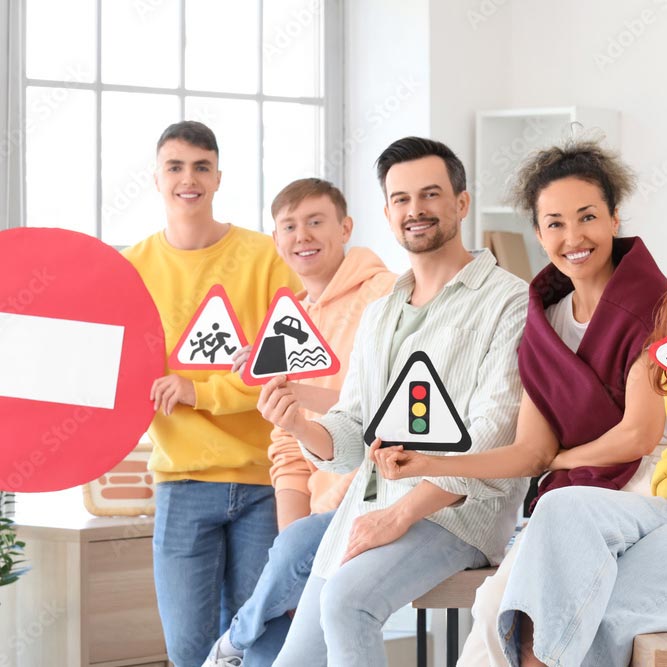
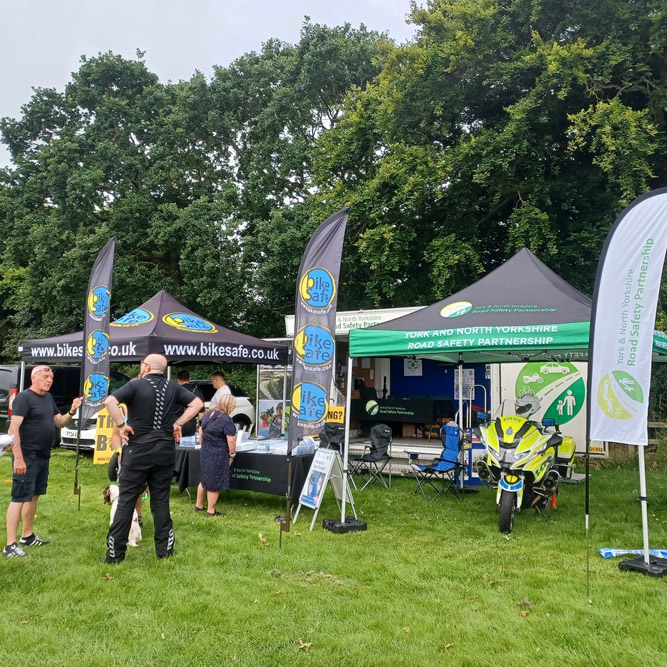
Engagement
- Work to enable more communities to access Community Speed Watch to improve their feeling of safety and confidence out and about in
their area. - Promote the Speed Management Protocol to enable speeding concerns to be addressed in a coordinated approach to deliver the most appropriate interventions.
- Work with communities and partners to identify those most at risk and work collaboratively to deliver interventions tailored to meet local priorities through shared information, ideas, and opinions.
- Publicise outcomes of road safety and enforcement operations such as Operation Spartan cases and of incidents involving excessive or inappropriate speed recorded by the Safety Camera Van for education and engagement purposes.
- Work to improve engagement of professional drivers in vulnerable road users training.
- Engage with commercial operators and the business community to promote tyre safety and vehicle check campaigns.
- Enhance partnership engagement with those vulnerable road users who are most at risk of being killed or seriously injured in a collision.
- Work with partner to explore options for extending support for victims of road crimes, and victims of road collisions where no crime has been charged.
- Close liaison between road authorities and the health sector to assess and implement practical responses following those killed or seriously injured in a collision.
- Ensure appropriate measures are in place to support those who have been impacted by any KSI collisions with after care approach to specific communities or groups.
Engineering
- Adopt System based approach to address safer roads e.g., through engagement with local District plans around new developments and walking and cycling infrastructure plans.
- Work to redesign streets to encourage lower speeds as part of Healthy Streets programmes and to enable safe environment for people to walk, cycle, ride, and drive, whilst considering our most vulnerable road users. Ensure enabling features of the street, such as the width of the carriageway, the use of street lighting and clear road signs, including Vehicle Activated Signs.
- Provide information to inform people about the types of road challenges and the types of behaviours that are appropriate to encourage road users to adapt their behaviour accordingly.
- Ensure road safety interventions designs provide safer road measures and meet community needs and meet best national standards.
- Routinely analyse vehicle risks in causes of collisions and feedback findings to national, regional, and local recording bodies to ensure information is considered as part of future engineering of vehicle safety.
- Access funds to improve infrastructure which is compliant with the road safety directives.
- Consider the Post-collision/crash care which is designed to facilitate a faster and effective emergency response from rescue and hospital care services following the road collision.
- Encourage use of vehicle safety technology, and train new and existing drivers and riders in how to use new vehicle safety features, the new technologies as well as semi and fully automated driving.
- Promote technologies and enabling necessary conditions for the functioning of automotive Intelligent Speed system (ISA) (Where applicable) and adopting of safety technology.
- Maximise the use of innovative technologies which contribute to enhanced road safety.
- Promote use of telematics and black box technology used to monitor driver behaviour.
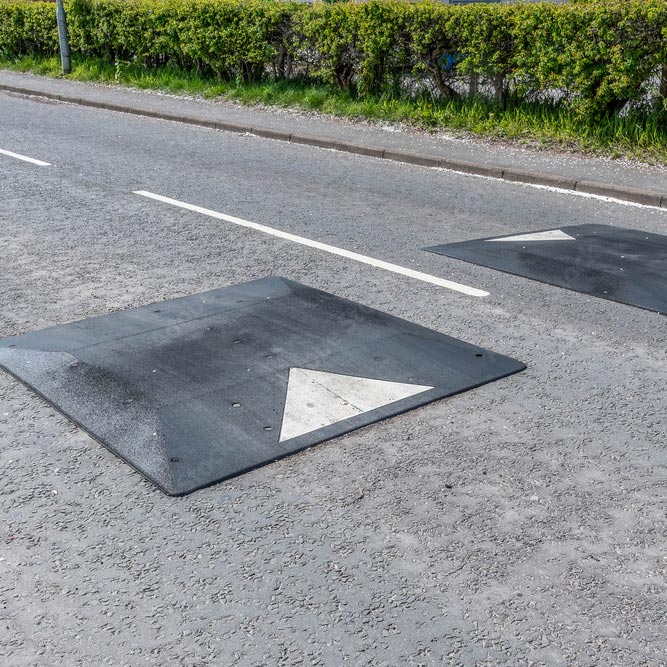
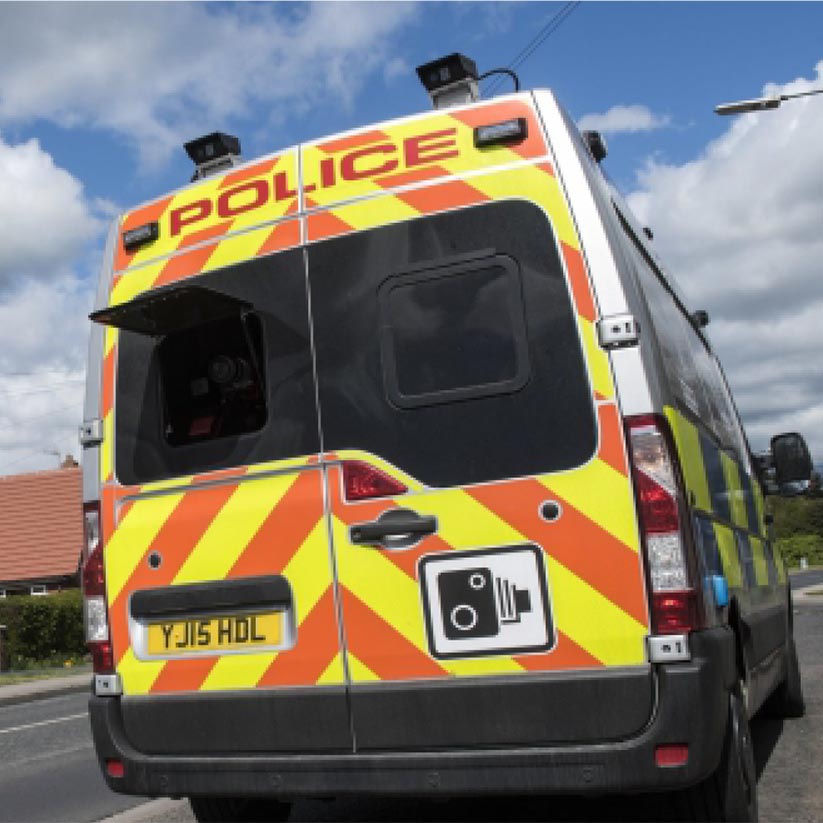
Enforcement
- Identify the most high-risk drivers and riders and use targeted enforcement activity focussed on high–risk offenders to reduce the reoffending cycle.
- Use high-visibility patrols, seemingly randomised deployments (location and time), to maximise coverage to those roads evidenced as the highest risk areas across York and North Yorkshire to amplify the deterrent effect.
- Optimise the use of speed cameras and mobile speed enforcement technology in areas of higher risk and/or community concern, including 20mph limit areas where appropriate.
- Continue to focus on road Camera Enforcement operations against the fatal five to monitor and enforce speed limits and irresponsible behaviour such as use of mobile phones.
- Deliver speed awareness courses to every first-time offender to ensure those committing offences learn how to be safer, better road users.
- Undertake more specialist enforcement campaigns around the fatal five, particularly taking a zero-tolerance approach to drink and drug driving through campaigns such as Op Attention, and related offences, such as uninsured or unlicensed vehicles.
- Expand and randomise unpredictable technical roadside checks against drink driving and allow random breath testing and police use of mobile evidential breath testing equipment.
- Work collaboratively through road operations such as Operation Spartan to deliver education to those vulnerable road users who act in a dangerous and/or irresponsible manner.
- Work with bordering Police forces and other key stakeholders to tackle cross border criminality on York and North Yorkshire Roads.
- Investigate all fatal collisions, and closely monitor all KSI collisions and maintain a list of high-risk routes and sites of concern to make informed decisions on contributory factors and provide appropriate remedial action.
- Improve justice and care for victims of traffic collisions and signpost victims of collisions to the most appropriate restorative justice and post-collision support services.

